
Bouldin Creek Residence was designed for a young family by Silverthorn Contracting and Design along with Restructure Studio, located in an historic district of south Austin, Texas. The owner is a contractor and an interior designer as well as a mother of four. When she set out to build her dream home, she had a few design dilemmas, such as a narrow lot on a steep downslope as well as a live oak tree in the center of the property, an eroding stream (with no promise of upcoming embankment), “McMansion” regulations on home size and the needs of home schooled kids as well as a work-from-home husband. Built in 2012, the 3,695 square foot house progresses down a sloped lot, with increased heft as it goes. It has been squeezed around the oak tree in the center, and a deck wraps the tree, making it the centerpiece of the design.
“We wanted [the house] to be modern,” Gonzalez says, “but to have a vintage, industrial feel as well.” This aesthetic is best seen in the living room, where antique chairs mingle with exposed steel windows, and the herringbone floor butts up against the plaster finish of the fireplace.
The classic Rumford Fireplace pushes heat into the room and easily warms the living room and kitchen. The steel above the opening is structural, but instead of placing a veneer on top, the homeowner left it exposed, which increases the industrial feel of the space. She also wanted a mantel with presence, but that didn’t leave room for objects placed on top. This piece of salvaged wood — the tip of an old pylon dredged from the bottom of the Colorado River — worked.
The office sits at the front of the house, away from homeschool activities. The husband works from home, and here it’s quiet enough for his conference calls.
Throughout the home the owner’s used reclaimed items. The chandelier is a rewired fixture, and the exposed ceiling beams, which are structural, are salvaged wood.
In the kitchen, the countertop is comprised of Carrara marble; the cabinets are white and a light gray; and a white chandelier hangs over the island. The backsplash and hood are greenboard painted with an eggshell finish. The shelves are reclaimed wood from a former spaghetti warehouse in downtown Austin. The brackets are repurposed from the custom-built steel windows.
The basement came as an afterthought, but was an easy addition. After digging out an 8-foot section of backfill, the team built a concrete retaining wall and a set of stairs to the first floor. The raw, exposed room works well for movie nights and as a quiet space that’s separate from the first floor.
A powder room is nestled under the stairs, and to the left is the office. The doors, both salvaged, were part of the homeowner’s findings while waiting for the permits. The architect designed the openings to fit the doors; having the doors onsite made the customization easy.
At the intersection of the entryway and two flights of stairs, the main flooring elements meet. The home’s entry sits on a concrete slab, then there are steps down to a cantilevered foundation (it floats above the oak’s roots) with wood floors finished with a gray stain. The stairs are pine, stained a dark ebony.
“The second story of a home usually gets neglected,” states the homeowner, “so I wanted to do something interesting.” The hallway worked as one of those engaging spaces. Instead of leaving a narrow hallway whose sole use was for passage between rooms, the designer and architect widened the path to create a reading nook.
They also repeated the salvaged-wood beams from downstairs and installed shelving from the excess window steel. On the other side of the windows, the upper branches of the oak tree sway, adding a calming visual.
The master bedroom has sweeping views of the creek and foliage beyond; the slanted windows progress from 9 feet to 12½ feet. The bed, made from a old industrial steel grate, is the focus of the room.
Both the freestanding tub and the vanity — a converted Belgian workbench — were finds that the homeowner discovered during the long permit process. The tub she discovered as a floor model; she waited until it was being sold at a discount at the end of the season.
For now three of the kids sleep in one oversize bedroom, (the youngest is still in a crib). When framing the room, the homeowner planned on the suspended sleeping space, and she had the framers build additional support in the wall. She also added sturdy rope that connects to a ceiling truss and a ladder that also provides structural support.
The steel doors open as traditional hinged doors (for quick access in and out), but they also fold together to create open access to the outdoor areas. The homeowner wanted to be able to move the dining room table outside if she wanted to, and the custom-built accordion doors fulfill this request.
The oak takes all the focus on the deck. The homeowner hired an arborist to help with preserving the tree, and the architect designed the house to both accommodate the needs of the tree and highlight it. Downstairs the deck and three walls of glass face the trunk, and upstairs a gallery of windows looks out at the branches.
The deck and part of the home’s foundation are cantilevered, allowing the home to sit above the tree and leaving the roots undisturbed. For the decking material, the homeowner chose garapa wood, which performs like ipe but is significantly cheaper. The untreated wood has faded to coordinate with the finish of the interior flooring.
A side yard provides space for play, and a pathway of loose rocks works as a swale to guide rainwater to the creek. The home also sits on piers sunk 40 feet into the ground, something Coel engineered to prevent the home from moving due to gradual creek erosion or flooding.
Custom steel windows were built onsite and stretch from floor to ceiling. Gonzalez’s husband lives by the mantra “The more light, the better,” but since moving in, they’ve added curtains.
Photos: Michael Hsu
The site plan outlines the difficulties of designing the house. The large green circle represents the canopy of the oak tree and shows what an obstacle it was to work around. Coel made room for the tree and also managed to get city approval for moving the house closer to the street and farther from the creek.

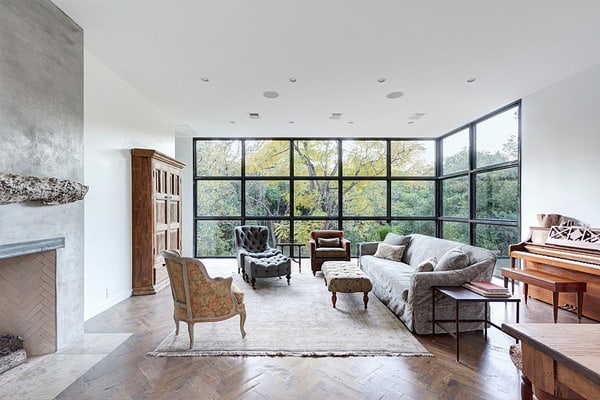
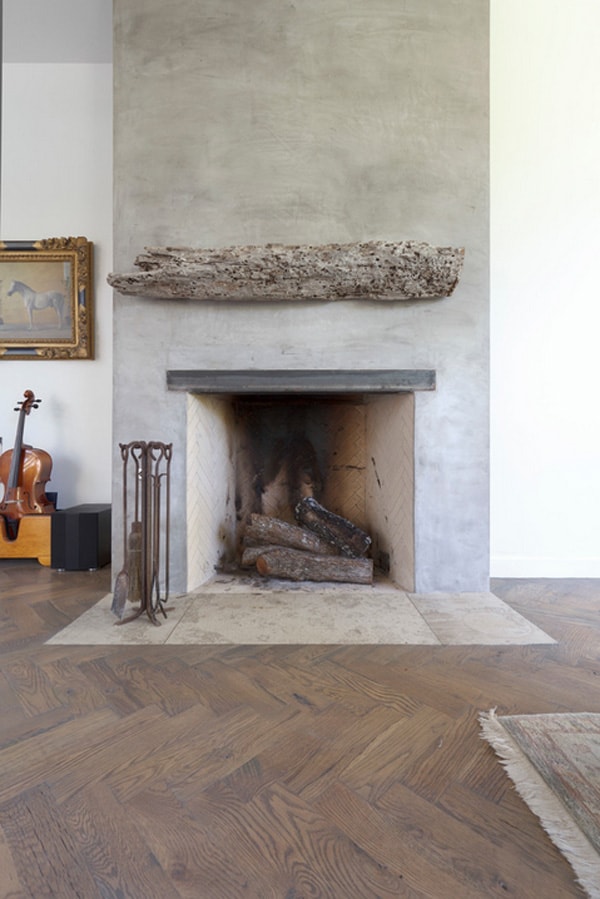

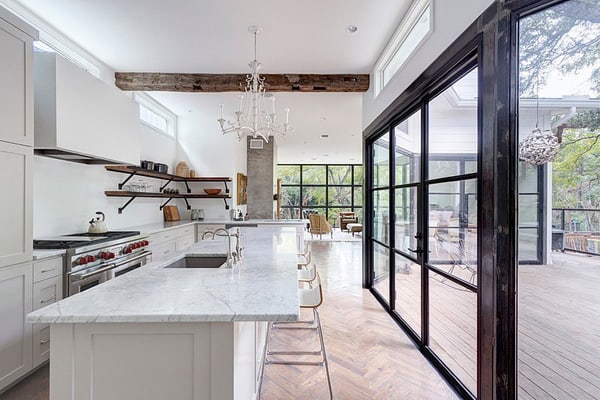
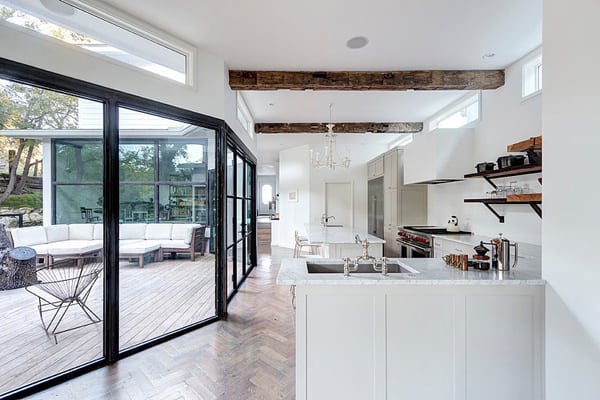
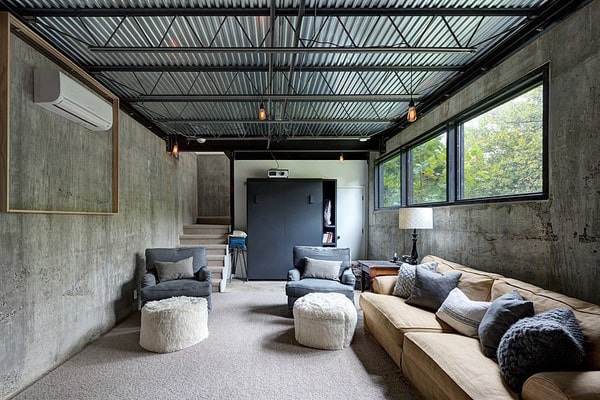
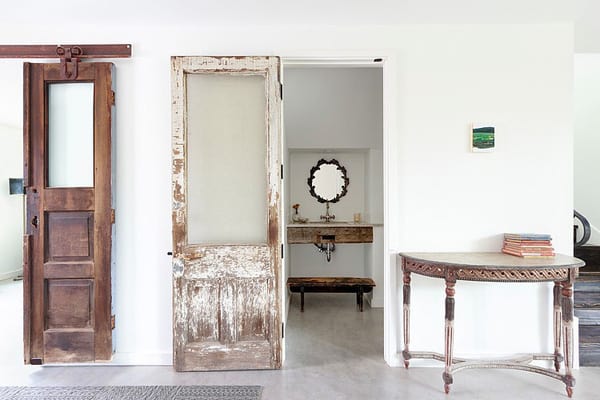
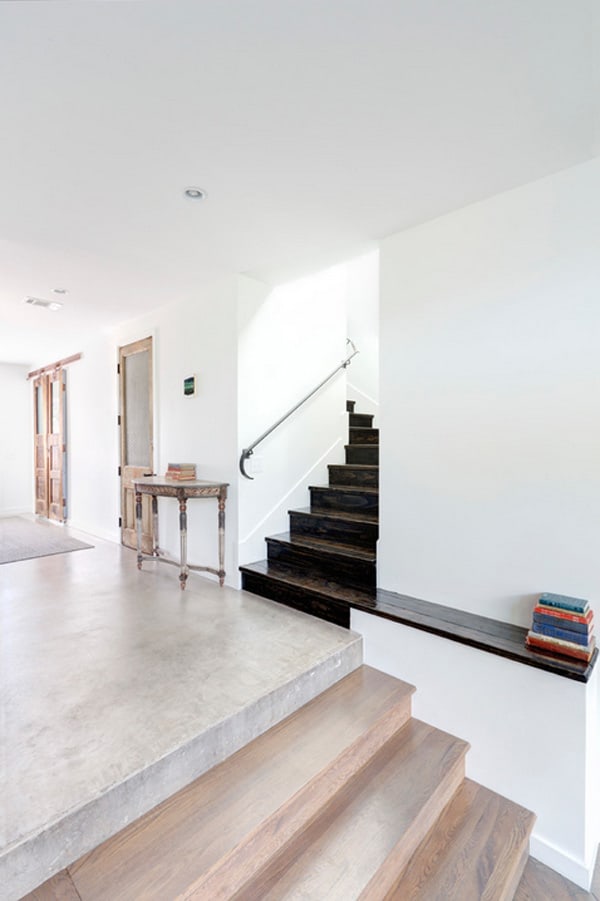
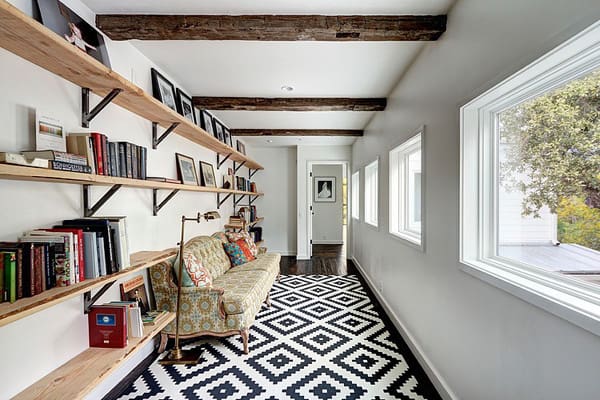
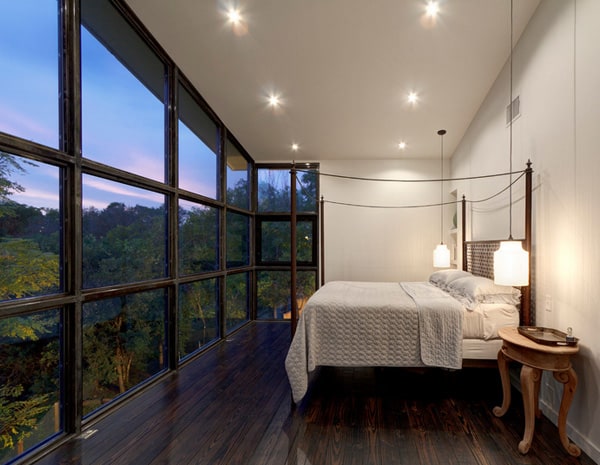

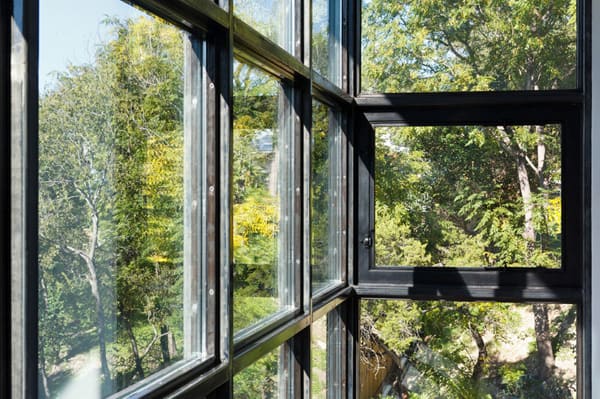
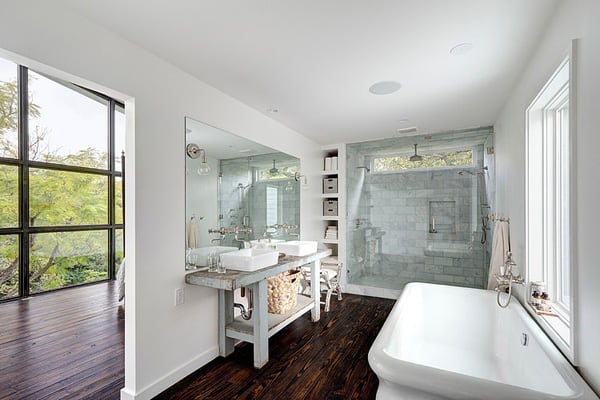
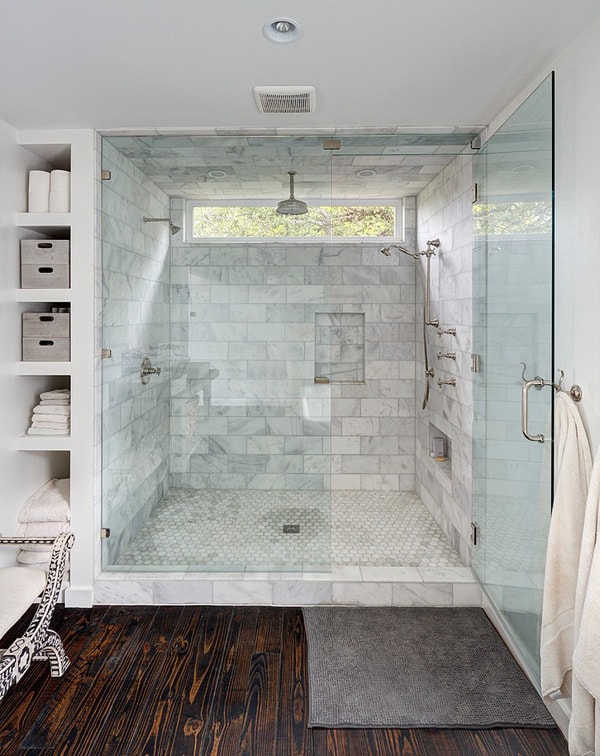
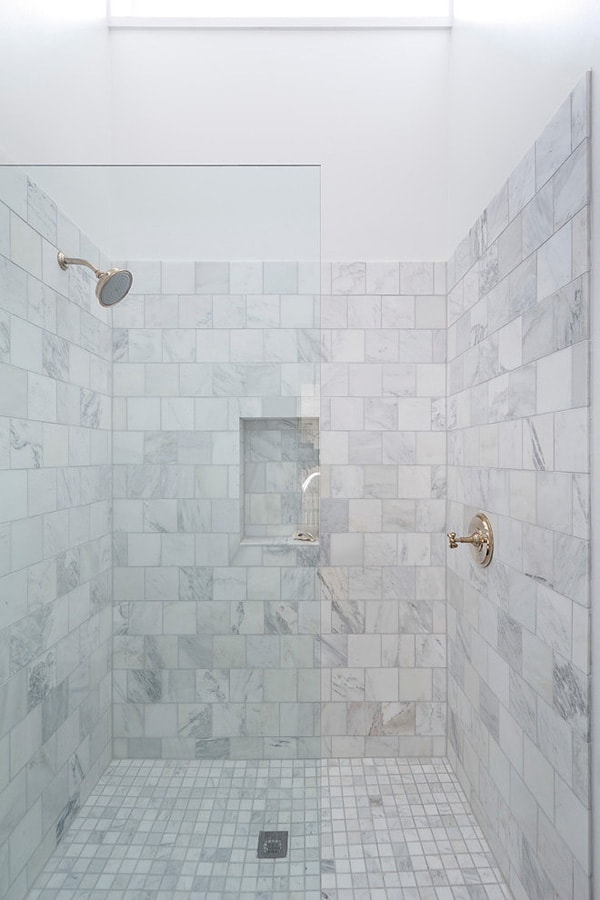
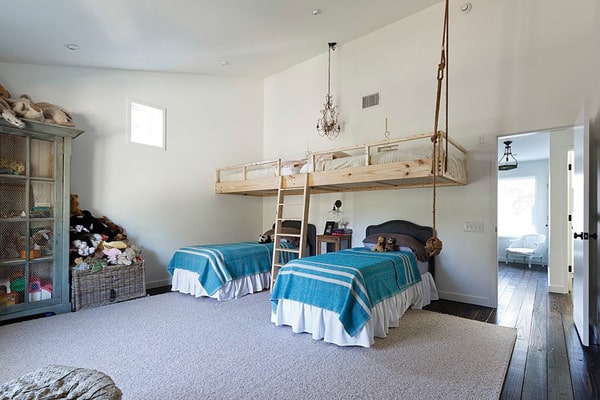

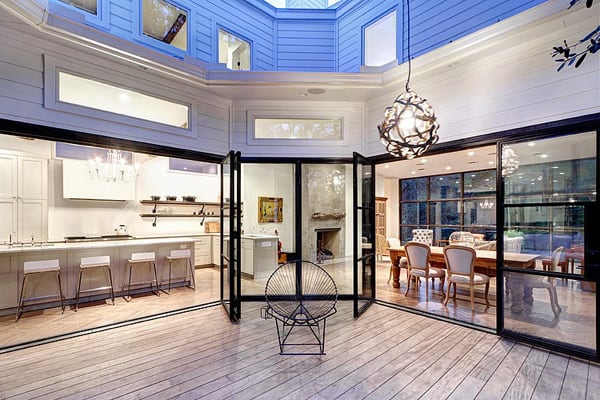
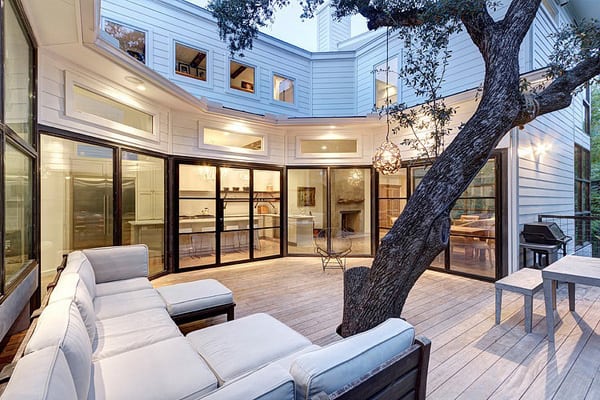
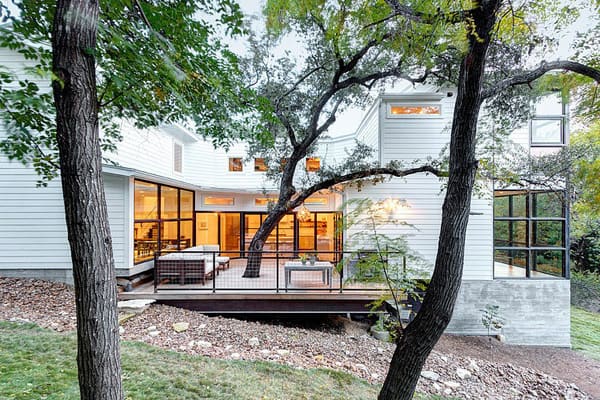
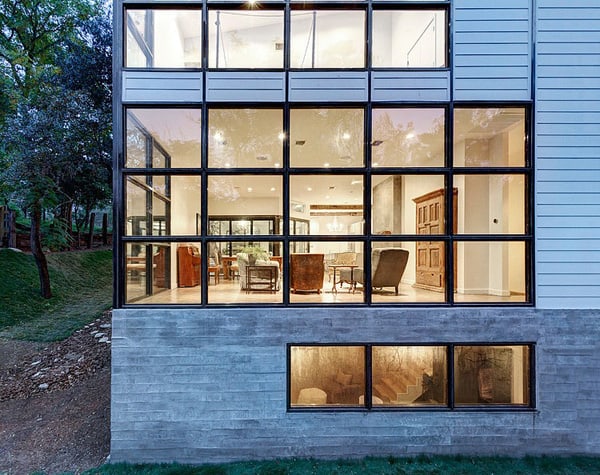
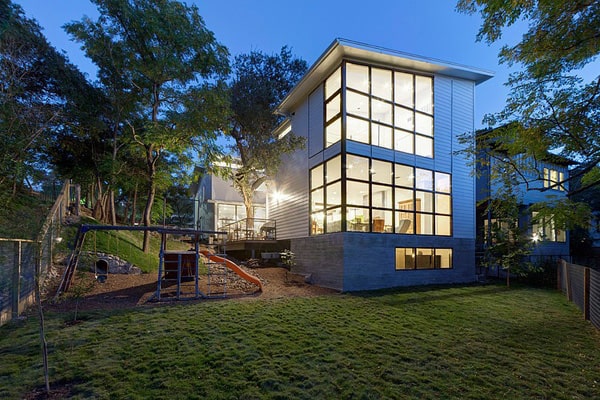


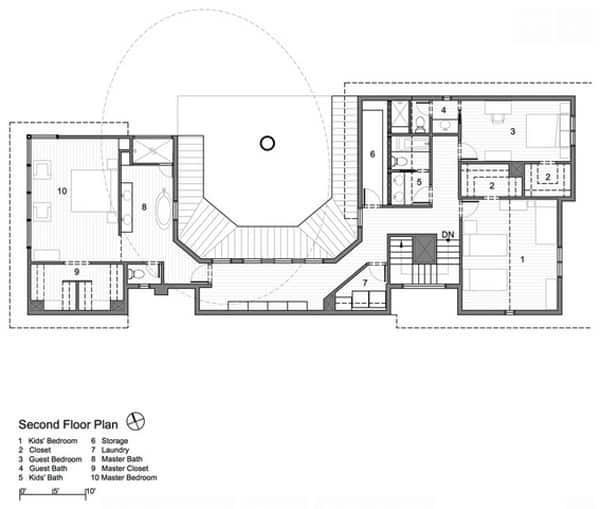
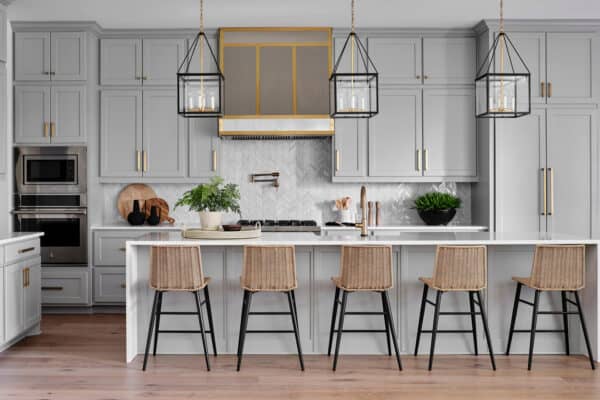
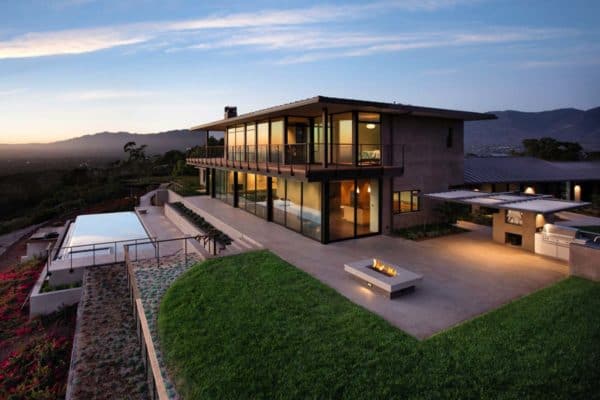

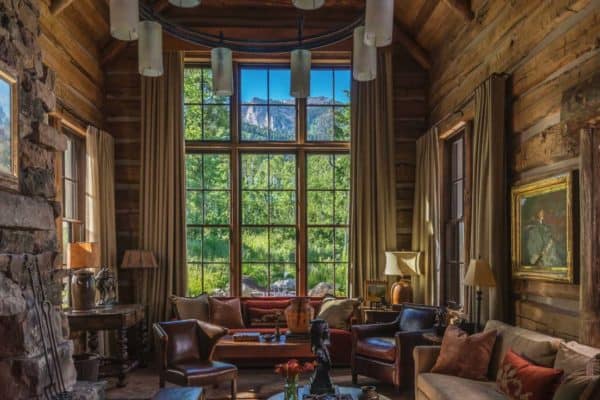
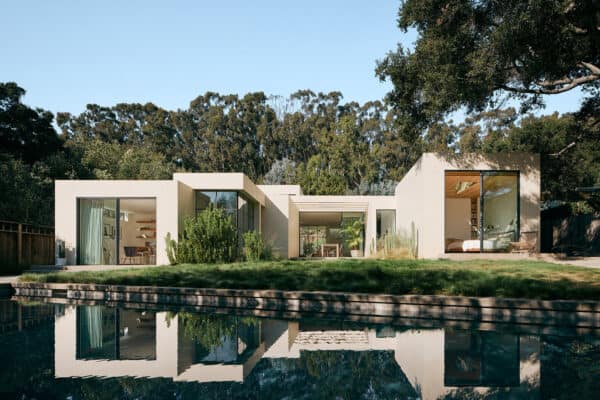

1 comment